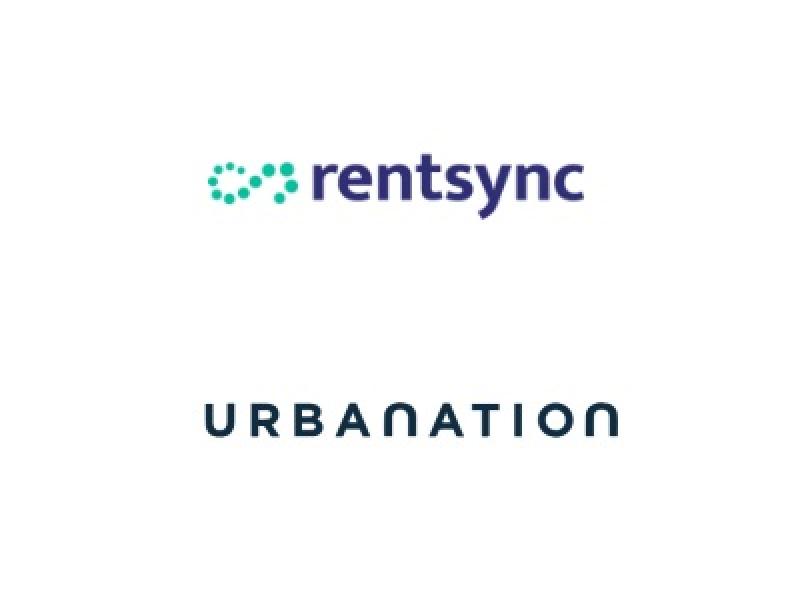
Construction cranes mingle with harbour cranes over the skyline of Halifax in this image shot from neighbouring Dartmouth. (Image courtesy Alexandra Baird Allen, Turner Drake Partners)
Additional office space entering the market pushed up vacancy rates in Halifax, Moncton, Fredericton, Saint John and St. John’s last year, but leasing demand also increased in four of those cities.
“It’s encouraging to see that the office market has remained as robust as it has and that it hasn’t suffered more,” Turner Drake & Partners Ltd. economic intelligence unit manager Alexandra Baird Allen told RENX in an interview about its 2021 office market performance reports for major Atlantic Canada markets.
“We’re at a point where we’re emerging from the pandemic and it will be interesting to see what changes are long-haul changes and what changes are more temporary.”
There’s space available and rental rates increased by less than the anticipated annual inflation rate last year, which are positive points for prospective tenants in the region.
Turner Drake is headquartered in Halifax and also provides real estate services to clients from offices in St. John’s, Charlottetown, Saint John and Toronto.
The 46-year-old company’s latest market surveys collected rental, operating expense and vacancy data for 597 office and industrial buildings, some as small as 5,000 square feet, with an aggregate rentable area of more than 30 million square feet.
Halifax office market
There were 175 office buildings with 12.16 million square feet of space surveyed in Halifax, which had the lowest vacancy rate in Atlantic Canada, 14.86 per cent. That was up 120 basis points from 2020, but demand increased as well, with a regionally leading absorption rate of 10.8 per cent.
Baird Allen said tenants leaving their former spaces, which remained empty, for newly delivered space accounted for much of the vacancy rate increase.
Some older office buildings are being converted, or considered for conversion, to residential or other uses, she added.
The total amount of rentable office space increased 12.4 per cent over 2020, with new spaces brought to market in both downtown and suburban locations.
“A lot of the space was redevelopment and renovated space being re-added to the market over this past year,” said Baird Allen.
Class-A rents ticked up from $17.78 to $18.34 per square foot, pushing the overall average net rental rate up from $14.34 to $14.66 per square foot. Rents increased because new supply and newly renovated space has higher rates than older, vacated space.
Baird Allen said sublets aren’t playing much of a role as most tenants are hanging on to their leased office space.
The technology industry is growing rapidly in Halifax and startup firms — some from the Volta incubator — are taking up some relatively small spaces. Banks, as well as accounting and law firms, have also been absorbing space.
Office space demand is expected to increase 3.6 per cent this year while the vacancy rate is projected to decrease to 12.96 per cent.
The biggest new office development to hit the market this year should be the six-storey, 105,000-square-foot Westway IV in The Armour Group’s Westway Park development in West Bedford.
It’s expected to be completed this summer and leasing has been progressing well.
Four existing office buildings at Westway Park, encompassing more than 350,000 square feet, are fully leased. Another 600,000 square feet of office, retail, hotel and residential development is planned for the future in Westway Park.
Richmond Yards is a mixed-use project in the north end of Halifax that will have about 75,000 square feet of office space as well as approximately 600 residential units, 46,000 square feet of retail, approximately 900 underground parking spaces and 90 surface parking spaces.
The first phase of development should be ready for occupancy in the summer of 2023.
“Our economy is roaring and our population growth is higher than it’s been in recent memory,” said Baird Allen. “That will generate more demand for office space because we’re getting bigger.”
Halifax warehouse market
The pandemic has led to an increase in online shopping, driving a strong increase in demand for warehouse space across Canada — including Halifax.
Turner Drake surveyed 161 warehouse buildings with 8.07 million square feet of space in the Halifax Regional Municipality, where industrial vacancy dropped from 6.64 per cent in 2020 to 3.96 per cent last year.
Since the available space is typically in small amounts spread over a number of buildings, occupancy can essentially be considered full.
“A lot of the land that’s zoned for industrial and ready to build on is already owned by people who have plans for it, so getting industrial land is tricky,” said Baird Allen. “It’s not just that buildings have low vacancies, there are also supply constraints due to land availability.”
There was a seven per cent increase in demand for warehouse space and the total amount of rentable space increased by 4.1 per cent over the previous year. There was a commensurate increase in average net rents, which climbed from $8.14 to $8.76 per square foot.
A 68,505-square-foot industrial building at 36 Ramona Court in Burnside was completed last year and has 15,908 square feet available for lease in one unit, according to its web page.
While more speculative development is starting to happen in Burnside, Baird Allen said most new industrial space in the Halifax area is brought to market due to user demand.
Amazon announced the opening of a warehouse and distribution centre in Burnside last year and Baird Allen said there’s talk it may also expand into Halifax.
Warehouse space demand is expected to rise by 5.2 per cent this year. With new space being brought to market, the vacancy rate is forecasted to remain in the four per cent range.
Moncton office market
Turner Drake only surveyed industrial properties in Halifax in its latest reports, but covered the office markets in Moncton, Fredericton, Saint John and St. John’s.
Eighty buildings encompassing 3.5 million square feet were surveyed in Moncton, where vacancy rose 200 basis points to 15.64 per cent at the end of 2021 despite a 7.1 per cent uptick in demand.
Rentable space increased by almost 10 per cent due in part to newly converted office space being added to the market.
Moncton’s overall net rent moved from $13.03 to $13.35 per square foot and class-A increased from $13.79 to $14.35.
Office demand is expected to increase four per cent this year and the vacancy rate to drop to 12.6 per cent.
Fredericton office market
Turner Drake surveyed 54 buildings with 2.44 million square feet of gross leasable area in Fredericton, where vacancy was among the lowest in Atlantic Canada over the past few years.
It saw the largest increase in vacancy in the survey last year, however, at 600 basis points. This was driven by a significant amount of new class-A office space being brought to market, while demand increased by 250 basis points.
The class-A vacancy rate in New Brunswick’s capital sat at 22.65 per cent while the overall vacancy rate was 15.67 per cent.
Rentable office space increased by almost 10 per cent over the previous year. Baird Allen said new supply came to market at Cyber Centre, an advanced networking and data fibre facility at Knowledge Park.
Fredericton’s overall average net rental rate edged up to $14.13 per square foot from $13.88, while class-A settled at $16.42 versus $15.79 in 2020.
Office demand is anticipated to increase by three per cent this year. With no additional new supply expected, the vacancy rate is expected to decline to 14.4 per cent.
Saint John office market
While Saint John’s vacancy rate has been among the highest in Atlantic Canada for a long time, its 43 buildings and 2.45 million square feet had the lowest year-over-year increase in vacancy at 110 basis points. It closed 2021 with 18.4 per cent of its office space vacant.
It was the only city surveyed to experience declining demand for office space, at a rate of 1.4 per cent.
Saint John’s overall average net rental rate climbed from $13.16 per square foot to $13.38, with class-A dropping from $14.86 to $14.53.
Office demand this year is expected to increase by 1.6 per cent. No major additions to rental supply are anticipated and vacancy is expected to decrease slightly to 17.1 per cent.
Baird Allen said some older office buildings in uptown Saint John have been converted to residential uses and more may follow suit, though some could be mixed-use that combine residential and office space.
St. John’s office market
There were 84 buildings encompassing 3.9 million square feet surveyed in St. John’s, the capital and largest city in Newfoundland and Labrador. It saw a large addition of class-A office space push the vacancy rate from 17.8 per cent to an Atlantic Canada high of 23.3 per cent, despite a 5.7 per cent increase in demand.
St. John’s had the highest average net rental rate, at $18.51 per square foot, up from $18.06 a year earlier. Class-A rents climbed from $22.08 to $23.17 per square foot.
An anticipated office space demand increase of 1.4 per cent will likely be insufficient to keep pace with further additions to supply. The vacancy rate is expected to increase to 24.3 per cent.











